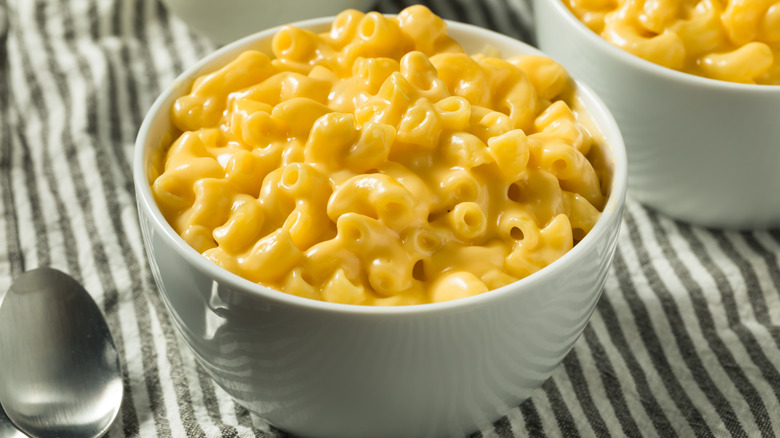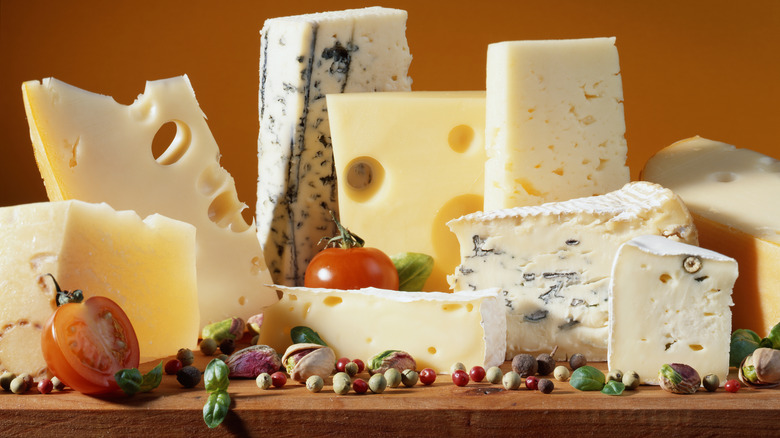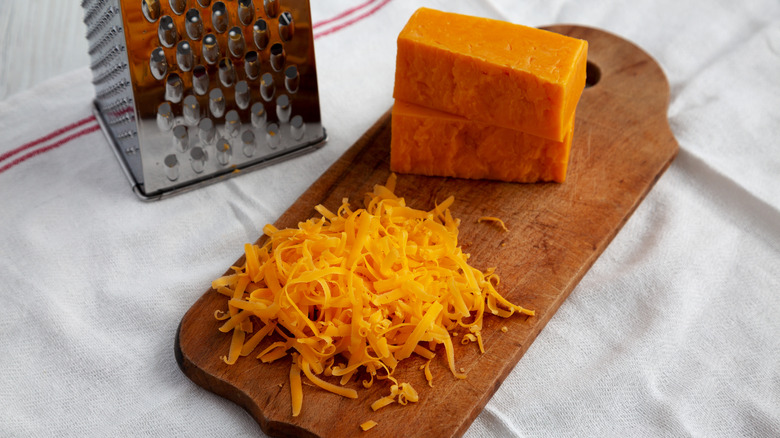Why Aged Cheese Isn't The Best Idea For Your Mac And Cheese Sauce
One of the keys to making a great dish of homemade mac and cheese is whipping up a tasty sauce to douse your pasta with. You have many options when it comes to choosing which cheeses to incorporate into your sauce to make it as delectable as possible. Using multiple kinds of cheese may even give your final dish a deliciously complex flavor profile. However, you probably shouldn't use aged cheeses because they will be difficult to melt into a sauce to pour on your noodles.
Aged cheeses are those that have been dried for a period of weeks, months, or even years. They are also preserved by different means, including salting and smoking. The process of aging cheese causes it to lose its moisture as well as become sharper and harder, which intensifies its flavor. In addition to the cheese hardening, as it ages, it also becomes more difficult for it to be melted under heat. If you try to incorporate aged cheese into the sauce for your dish, the cheese is likely to become oily or develop a grainy texture, which is the opposite of the creamy consistency needed.
Aged cheeses have tightly bonded proteins that make it harder for them to melt
Using the wrong type of cheese is one of the potential mistakes you can make while preparing homemade mac and cheese. Incorporating aged cheese in your recipe may be a bad choice because of how poorly it melts, a side effect of how the cheese's proteins evolve when it is aged.
Fresh cheeses contain a major protein called casein, which is chemically wound into very compact structures that prevent the proteins from interacting with each other. As the cheese ages, these protein structures undergo the process of proteolysis, which causes the structures to loosen from each other and reattach to other casein molecules. This creates a new, very malleable protein structure called a matrix. Fresher cheeses do not have this, which is why they melt much more easily.
However, as the cheese ages longer and longer, that matrix of casein proteins forms tighter and tighter bonds that will only allow it to be melted under high heat. As a result, when you melt the aged cheese, it isn't as malleable as fresher cheese. The melted aged cheese then turns clumpy instead of developing the creamy consistency that you want your sauce to have when you mix it into your pasta.
Use these young cheeses to make the sauce for your mac and cheese
When it comes to picking the best type of cheese for making homemade sauce for your mac and cheese, you should choose those that melt well and have a delicious flavor. And while some cheeses that have incredible flavor may not melt well, don't worry. You can also create a combination of melty cheese and flavorful cheese for your sauce.
Sharp cheddar may be the most popular cheese to use to make a sauce for mac and cheese, as it melts at a lower temperature. Just be sure to grate a fresh block of sharp cheddar instead of using pre-shredded cheese for your sauce because pre-shredded cheeses do not melt as well. Gruyère also melts well, and it will bring some salty, nutty flavor to the sauce for your mac and cheese. You can also use cream cheese in your sauce, another option that also melts very nicely while helping give your sauce a creamy consistency and some tangy flavor.
If you'd like to create a delicious cheese combination for your sauce, you can mix sharp cheddar with Gruyère to create a nutty and tangy flavor profile. If you want to use sharp cheddar but prefer a more flavorfully balanced sauce, you can combine it with smoked gouda. The sweetness of the gouda will complement the sharpness of the cheddar, resulting in a tasty mac and cheese.


